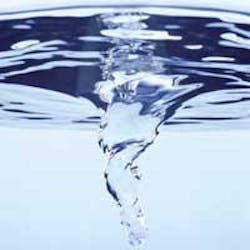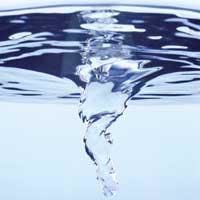Bottled water ... Does it have that dental oomph?
by Cathy Hester Seckman, RDH
As hygienists, we can't help linking water with fluoride. Don't we all keep a list of which neighboring communities fluoridate their municipal water? Mine is posted conspicuously on the operatory wall.
"Is that a good thing?" a young mother asked when she found her town's name in the "yes" column. So I gave her the short course. She said thanks, picked up her purse and her half-liter of bottled water, and went home.
Wait a minute. Sure, her home water is fluoridated. But how much good does that do her when she isn't drinking it?
Think back about 15 years ago. When you went on errands, took your kids for a hike, or headed to aerobics class, what did you take with you? It sure wasn't water, because the bottled water industry as we know it today didn't exist back then. Most people never thought about carrying water. If we were thirsty, we just waited until we got home.
But the half-liter bottle of water is as ubiquitous today as the sports utility vehicle. Many people take one everywhere they go.
The Beverage Marketing Corporation found that bottled water consumption more than doubled in the 1990s. It expects that, by 2005, consumers will drink 25 gallons of bottled water yearly, more than any other beverage except carbonated soft drinks.
Life's little question
We've been told over and over that we should drink eight glasses of water a day, and we've learned the lesson well. Drinking water is undeniably good for us; it makes us feel virtuous; and it's a lot easier than exercising. The only problem with drinking all that bottled water is the niggling little question in the backs of our minds - what about fluoride? When bottled water first became popular in the late-1980s, most people didn't know or care if it was fluoridated. But we're learning. The American Dental Association, at its 2002 session in New Orleans, issued a resolution stating that member dentists should ask patients which type of water they drink. Resolution 67H urges dentists to educate patients about fluoride content in bottled water and in home water treatment systems (see sidebar).
The resolution also supports two actions: including information with home water systems that would explain the systems' effects on fluoride levels; and labeling bottled water as to fluoride content. Most bottled water, the resolution states, has fluoride levels below 0.3 ppm (mg/L), which is less than the optimal 0.7-1.2 ppm (mg/L). The U.S. Food and Drug Administration doesn't require water bottlers to list the amount of naturally occurring fluoride on the label, only the amount of added fluoride. Members of the International Bottled Water Association (IBWA), a voluntary trade organization, are happy to address recent consumer interest. "We respond to consumer demand," says Stephen Kay, vice president of communications for the IBWA. "Thirty of our member companies sell fluoride-enhanced water, and it's more widespread and available now."
"We've become an on-the-go culture," Kay continues, "and a beverage culture. In the last 15 years, people have become more and more aware of the importance of water in the diet and on general health. Today, virtually anyplace you can buy a drink, you can buy water. People choose bottled water for hydration, for taste, for refreshment — for many, many reasons. As far as fluoride goes, some choose water for what's in it, and some for what's not in it."
The IBWA, Kay says, believes consumers should make their own choice about where to get fluoride. "Fluoride in bottled water might not be the optimal choice for everyone because they have other sources. We need to be concerned about fluorosis." He recommends consumers discuss water choices with their dentist or hygienist: "Take the overall regimen into account."
To discover whether a particular bottled water contains fluoride, Kay recommends looking on the label for contact information, or checking the IBWA website. IBWA member companies include Crystal Springs, Culligan, Mountain Park Springs, and Eureka.
As the bottled water and home water treatment industries continue to grow, we need to be aware of our patient's water preferences. It's up to us to educate them on wise choices for optimum fluoride exposure.
More information on fluoride in bottled and treated water is available from the American Dental Association at http://www.ada.org/prof/prac/issues/topics/bottledh2 o.html; and from the International Bottled Water Association at www.bottledwater.org.
Cathy Hester Seckman, RDH, is a frequent contributor who is based in Calcutta, Ohio. She can be contacted at cseckman @raex.com.
One company's reach for fluorideDannon has initiated one of the more aggressive marketing campaigns for fluoridated bottled water. The company's advertising for its Dannon Fluoride to Go suggests that the bottled water is perfect for children active in sports. In addition to the benefits of drinking water instead of "sodas full of sugar," Dannon asserts that its fluoridated bottled water helps "build strong teeth." The company's Web site said up to 1 mg of fluoride is added per liter of water. In an 8.5 ounce bottle of Dannon Fluoride to Go, there may be as much as 0.25 mg of fluoride.The company does recommend that consumers consult dental professionals about how much of the fluoridated beverage children can consume on a daily basis. For more information about Dannon Fluoride to Go, visit www.dannonwater.com/fluoride.html.Home water treatment systemsDo home water treatment systems remove fluoride that has been conscientiously added by municipal water authorities? It depends on the system.Because there has been a perception that municipal water is not as safe as it should be, consumers not only turn to bottled water - seen as more pure and natural - they filter their home water in an effort to make it more pure and natural.The Water Quality Association said in 1999 that 38 percent of adults use a home water treatment device. That represented a 28 percent increase since 1995. Almost half the people it surveyed said they were concerned about possible contaminants in their water supply.Home water treatment units can be point of use (POU) or point of entry (POE) devices. POUs are the most common, treating only water used for drinking and cooking. A POU device usually screws onto a kitchen faucet or is installed in a water pitcher. A typical POE device would be a water softener or reverse osmosis (RO) unit that treats all the water entering the house. Softeners remove minerals from water, and RO units convert seawater to potable water.Current research indicates that neither water softeners nor POE/POU filters remove significant fluoride from water, although filters that use activated alumina may remove 80 percent of fluoride.On the other hand, steam distillation removes 100 percent of fluoride, and RO filters remove 65 percent to 95 percent of fluoride.There is no significant research on the relation between home water treatment systems and caries risk, but we've known since 1909 that lack of exposure to fluoride does increase caries risk. The current recommendation is that homeowners who use water treatment systems should check with their dentist about their specific fluoride needs.
